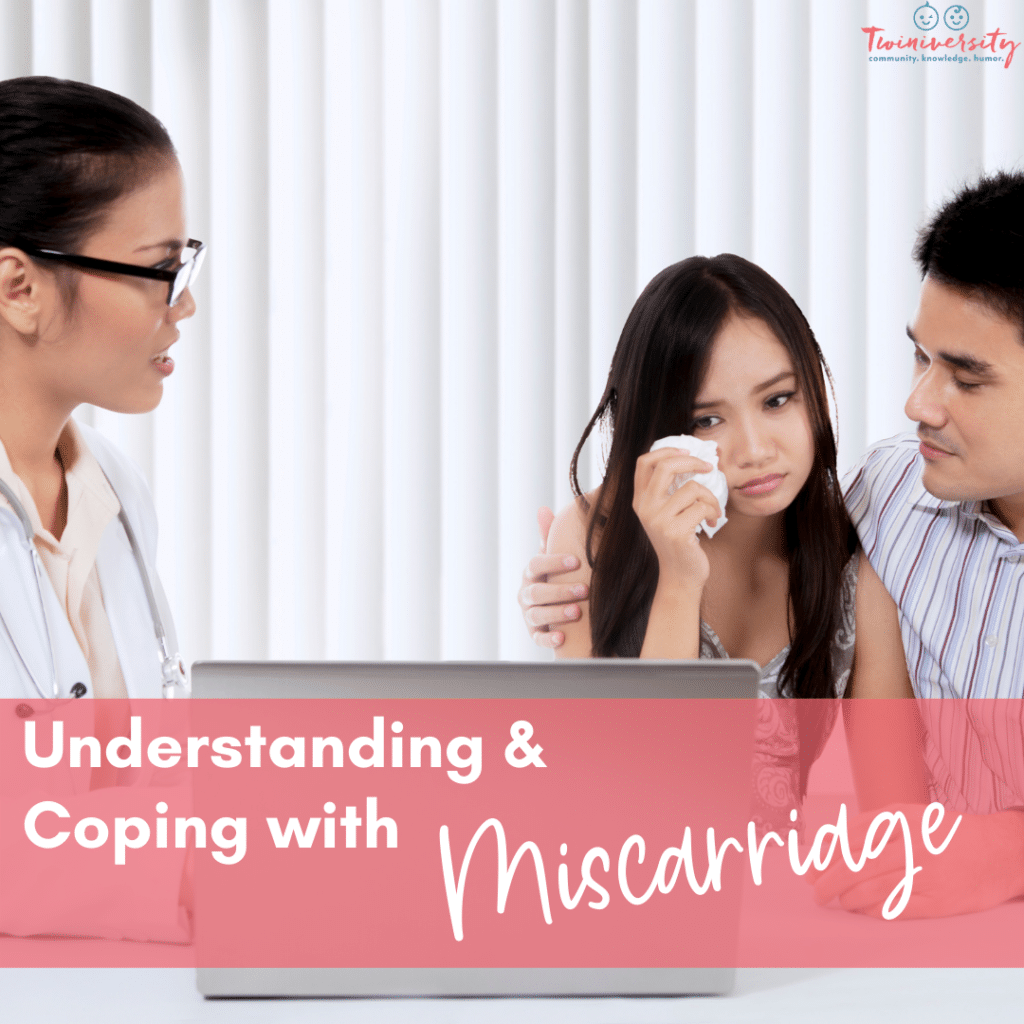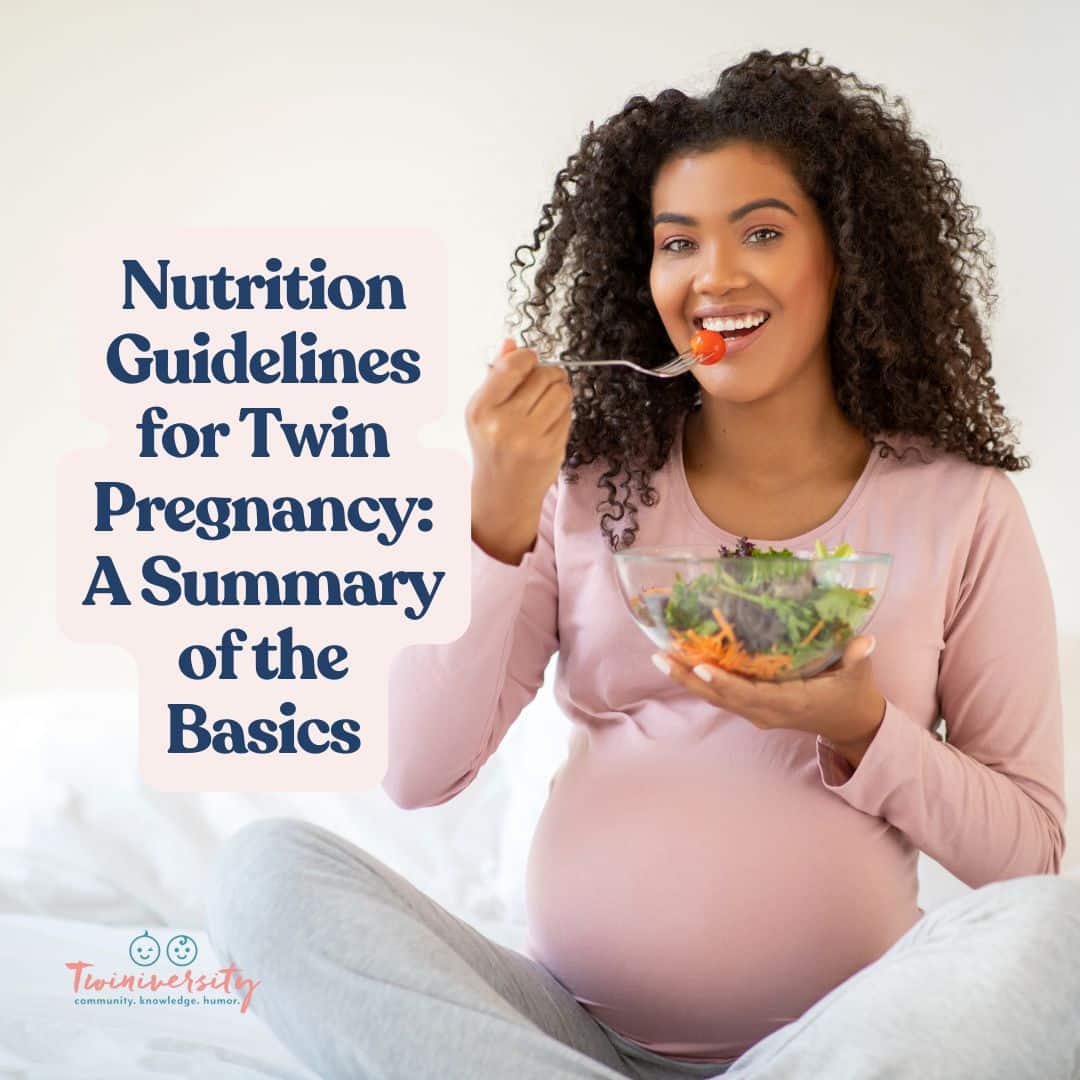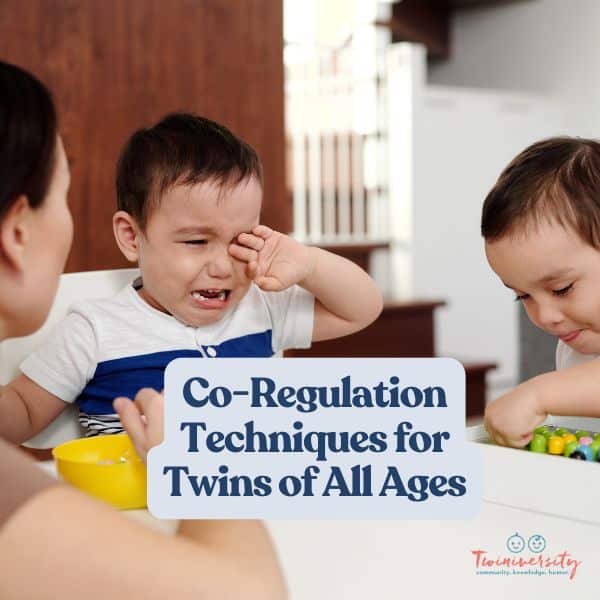Last updated on September 26th, 2023 at 01:41 pm
Disclaimer: This article touches on the sensitive topics of miscarriages and pregnancy loss.
All content on this website, including medical opinion and any other health-related information, is for informational purposes only and should not be considered to be a specific diagnosis or treatment plan for any individual situation. Use of this site and the information contained herein does not create a doctor-patient relationship. Always seek the direct advice of your own doctor in connection with any questions or issues you may have regarding your own health or the health of others.
My miscarriage started with a bike ride.
It was a muggy June afternoon. My husband and I were really into biking at the time, and we met after work for a 15-mile ride. I was eight weeks pregnant with our first child, and I had yet to share the news with most of my family and friends. At the time, I was feeling really good. I was happy and excited. This baby was very much planned for and already exceptionally loved.
The Symptoms
A little less than halfway through the ride, I started to feel a bit queasy. I figured it was normal pregnancy nausea. A short time later, I noticed some uncomfortable cramping. I tried to push through it, but the warm and humid weather wasn’t helping matters. We turned around, and I managed to make it back to the car and drive home. With every twinge of discomfort, I grew more concerned. Could I be having a miscarriage?
My heart sank even deeper when I went to the bathroom and realized I was bleeding. It wasn’t heavy, but it was there. My hope was shriveling. I think I’m having a miscarriage. I called my OB/Gyn’s answering service, and a short time later, a nurse called back. She said that spotting and cramping were common in early pregnancy, and I was advised to monitor the bleeding. If it worsened, I would call back the next morning.
After a night spent scouring the Internet for signs and symptoms of miscarriages, I woke up feeling a little better, but my tiny sliver of optimism vanished when I saw more blood. This was my reality. I know I’m having a miscarriage. A short time later, I called the OB/Gyn again, and they said they’d call back when an ultrasound appointment popped up. I went to work in an attempt to divert my attention, and it wasn’t long before I received the call.
The Confirmation
I waited for my husband to pick me up. I felt equal parts scared, angry, sad, and confused, and I didn’t want to be alone. While I am not an optimist by nature, I truly felt in both my head and heart that something wasn’t right. My fears were later confirmed when the ultrasound tech was unable to locate a heartbeat. She couldn’t even see an embryo. “Are you sure you have your dates right?” she asked, a hint of sympathy in her eyes. “Positive,” I said. Just like that pregnancy test I took a month or so before.
My conscience was a whirlwind, occasionally interrupted by medical terms like “gestational sac” and “fetal pole.” When we walked out of the room, I still didn’t fully understand what was happening. We made our way to the OB/Gyn’s office, where my husband and I sat silently in a cold, sterile room. My doctor walked in and handed me a box of tissues as she calmly explained the situation. I was having a blighted ovum miscarriage. My pregnancy had ended before an embryo had even formed. All I had inside of me was an empty sac. That, and my broken heart.
The Aftermath
After I processed my reality, I scheduled a D&C (dilation and curettage) for the following week. Things started happening on their own pretty quickly. I spent several days in excruciating pain while passing baseball-sized blood clots. I later learned, through experience, that this pain was not unlike actual labor. Eventually, I passed the gestational sac on my own. I felt a mixture of emptiness, relief, and devastation. As much as I felt I needed to mourn this loss, how could I mourn a baby who was never actually a baby?
It took about a week for me to recover physically, but much longer to recover mentally. I was fortunate to become pregnant again a few months later with a baby boy, and I had a relatively uneventful 41 week 5 day (!) pregnancy. My son, now seven, is my proverbial light at the end of the tunnel; my rainbow after the storm. We completed our family four years later with spontaneous identical twin daughters.
I wanted to share my miscarriage story not only to introduce this informational article but also to provide solidarity and comfort to mothers who may be experiencing similar symptoms or the difficult aftermath of a miscarriage. In this article, we will cover the signs, symptoms, causes, and aftereffects of miscarriages, and we will also provide resources to help with coping and moving forward.

What is a miscarriage?
The National Library of Medicine defines a miscarriage as “an unexpected loss of pregnancy before the 20th week.” Medical experts may also refer to a miscarriage as a “spontaneous abortion.” Miscarriages often occur very early in a pregnancy. Many times, a woman will begin to miscarry before she knows she is pregnant. Some women may miscarry without realizing it, mistaking the bleeding and cramping for a heavy period. When a miscarriage occurs before the fifth week of gestation, that is classified as a chemical pregnancy.
Blighted ovum miscarriages, like mine, account for approximately half of all quantified first trimester miscarriages. According to the American Pregnancy Association, these occur when an egg is fertilized and cells begin to develop the gestational sac, but the progress is terminated (likely due to chromosomal issues) before an embryo is formed.
Miscarriages are sadly very common, but they may be even more prevalent than we think. You may be familiar with the “one in four” statistic, which indicates that one in every four pregnancies ends in a loss. That figure encompasses all types of pregnancy loss, including miscarriage, stillbirth, and ectopic pregnancies. Because miscarriages can happen before a pregnancy is confirmed, and they are not always treated medically, it is difficult to accurately quantify the number of miscarriages that occur.
What causes miscarriages?
When you think about it, the earliest days of pregnancy are crucial. After the egg has been fertilized, cells are dividing like crazy, and the female body is preparing itself to house a new little life for the next nine months. So much has to go perfectly in order for a pregnancy to progress the way it’s supposed to.
Often, when a miscarriage occurs, it is because of a chromosomal problem that is completely out of the parents’ control. The American College of Obstetricians and Gynecologists explains that in these instances, there simply may be too many or too few chromosomes in one or both of the egg or sperm. If the chromosome number in a fertilized egg is above or below standard 46, that could impede the development of an embryo. There are so many factors that may come into play when you consider the complexity of genetics and the human body.
Additional factors such as hormone abnormalities, certain illnesses or infections, drug, tobacco, or alcohol intake, or exposure to hazardous environments or substances could also cause miscarriages to occur.
What are miscarriage risk factors?
Miscarriages can happen to any woman from any walk of life. Still, it is important to note that there are factors that could increase the risk of pregnancy complications. If you are pregnant and any of these risk factors apply to you, please be sure to have a discussion with your doctor. The March of Dimes compiled the below list of risk factors.
- Having two or more previous miscarriages
- Being age 35 or older
- Smoking, drinking, or drug use
- Chemical exposure
- Autoimmune disorders (such as lupus)
- Obesity
- Hormone abnormalities (such as PCOS, or polycystic ovary syndrome)
- Diabetes
- Thyroid issues
Does the likelihood of miscarriage increase when you’re carrying twins?
Since this is a website about twins, after all, I felt it would be important to touch on any potential connections between miscarriage and twin gestation. There is a type of miscarriage that is unique to multiples called vanishing twin syndrome. This occurs when one twin fetus dies and the other survives, and the deceased fetus seemingly disappears. Sometimes, typical miscarriage symptoms occur, and other times, the fetal tissue absorbs back into the body.
Studies indicate that vanishing twin syndrome occurs in a rather high amount of multiple pregnancies. The American Pregnancy Association estimates that 21-30% of multiple pregnancies experience vanishing twin syndrome, but it is hard to come up with concrete data. Because miscarriage symptoms may not be as severe or as noticeable with vanishing twin syndrome, it may even happen before a multiple pregnancy is able to be confirmed.

What are the signs and symptoms of miscarriages?
There are several physical signs and symptoms that often accompany a miscarriage or signify that one may be impending. It is important to remember that these signs and symptoms are NOT always surefire indicators of miscarriage. At the same time, it would be a good idea to contact your doctor if you are experiencing any or all of them during early pregnancy.
- Spotting or Bleeding
- Back or Abdominal Pain
- Cramping or Contracting
- Decreasing Signs of Pregnancy (such as sore breasts, nausea, etc.)
According to the American Pregnancy Association, miscarriage bleeding does not require a specific color or consistency. It could be brown, pink, or bright red, and it could be light spotting or heavy gushing. If a miscarriage progresses far enough before medical intervention, large amounts of tissue may begin to expel from the uterus.
What should you do if you think you are miscarrying?
Your OB/GYN is the best resource to help you in these situations. If you’re noticing any bleeding, spotting, cramping, abnormal pains, or anything else that might make you feel that something is wrong, give them a call. They will be able to talk you through the problems you’re experiencing and make arrangements for you to have an exam, if necessary.
It is important to be informed, of course, but the internet should not be a place to self-diagnose. That’s what the professionals are for. If the doctor is not available, or it’s after business hours, leave a message for the answering service. Someone should be on call to help you out and guide you through the next steps.

What happens if you don’t pass tissue in a miscarriage?
Believe it or not, you can have a miscarriage with no symptoms whatsoever. A missed miscarriage occurs when a fetus dies during early pregnancy, but the body seemingly fails to recognize or respond to the change. Often, missed miscarriages are not detected until an ultrasound signifies a lack of fetal movement or activity. Once a missed miscarriage is confirmed, the woman can opt to have a D & C or attempt to pass the remnants naturally. There is a heightened risk of infection if fetal tissue lingers in the body too long.
Additionally, there are miscarriages that occur when part of the fetal tissue vacates the body, but part remains inside the womb. They are classified as incomplete miscarriages. The options for extracting the remainder of the tissue are similar to those of a missed miscarriage. There are also medicines that help to expel fetal tissue from the body.
What happens during and after a D & C?
In relation to a miscarriage, a D & C (dilation and curettage) is an outpatient surgical procedure that removes tissue from the womb after a pregnancy loss is detected. During this surgery, the cervix is manually dilated, and the uterus is scraped out, or curetted, with a special instrument. The procedure takes mere minutes, and the patient is usually under anesthesia.
While I never ended up having a D & C for my miscarriage, I did have one several years later to have a couple of benign polyps removed from my uterus. It was performed at a local hospital by my OB/Gyn, and I was fully sedated for the procedure. I had a hysteroscopy with my D & C so the doctor could ensure that everything was removed that same day. That is not typical for a D & C associated with miscarriage unless the miscarriages are inexplicably reoccurring.
After a D & C, the patient will need to spend some time in the recovery room. It is common to bleed for several days after the procedure, but the risk of infection is elevated at that time. As a result, tampons should be avoided until the OB/Gyn gives the OK to resume use. There may be some cramping (similar to menstrual cramps) in the days following the procedure.
Am I at increased odds of another miscarriage?
According to the Cleveland Clinic, 87 percent of women who experience a miscarriage will go on to have one or more healthy, normal pregnancies. Recurrent miscarriages can happen, but at a much lesser rate than a one-time miscarriage. USC Fertility states that only two percent of women will experience two subsequent pregnancy losses. Just one percent will have three or more losses in a row. Fortunately, for these women, there is still a good chance that a normal pregnancy will eventually occur.
Repeated miscarriages may be caused by medical problems, such as autoimmune disorders, the presence of fibroids or polyps, diabetes, or PCOS. Additionally, advanced maternal age could play a role in the occurrence of chromosomal abnormalities.
When can I conceive again after a miscarriage?
Many doctors recommend taking some time to get the body back on track before trying again for another baby. However, it is possible to get pregnant a short time after miscarrying. It may be best to allow one menstrual period to occur. This would give the body a chance to reset and prepare itself for the possibility of another pregnancy.
An interesting NIH (National Institute of Health) study from 2016 found that women with a history of pregnancy loss who attempted to conceive less than three months after a miscarriage was actually more likely to become pregnant than those who waited more than three months. Additionally, the researchers did not find any heightened risks associated with the pregnancies that occurred less than three months after the miscarriages.
Of course, if you are hoping to get pregnant again soon after experiencing a miscarriage, it is important to make sure that you are mentally and emotionally prepared. While you may feel that a healthy pregnancy would cure your devastation, it may take a bit of time to grieve your loss and truly process the trauma that your body endured. Your OB/Gyn can help you determine the best time to resume trying for a pregnancy.

How do I cope after having a miscarriage?
Miscarriage is so much more than the loss of a pregnancy. It is a loss of hopes and dreams; the loss of plans and ambitions; the loss of the celebration of bringing new life into the world. It is a cause for bereavement, even if it may have been too early to see a tiny flickering heartbeat. It is a death in your family. In the days following the miscarriage, it may be hard to put one foot in front of the other, and that’s OK.
If you are working, check with your employer to find out about your bereavement policy or if short-term disability could be an option. I was fortunate to be able to take some time off work. Most of the time, I stayed in my pajamas until noon and watched the Price is Right. More of my healing came in the form of naps, chocolate chip cookies, and walks through the park. I talked to my mom a lot, which also brought me great comfort. After a few days, I was ready to go back to work and resume “normal,” although I knew in my heart that things would never really be normal again.
The truth is, that everyone grieves differently. Talking about the miscarriage to family and friends may help provide closure, or it could invoke too many unpleasant thoughts. You may find that speaking with a counselor or therapist will help you to sort out your jumbled feelings and emotions. The March of Dimes published a wonderful article that provides valuable advice about grieving the loss of a baby.
Resources for help and support to deal with miscarriages
Coping with miscarriage can be incredibly difficult, but you don’t have to process your feelings alone. There are a host of websites and online communities that may help you to find mutual support throughout your grief journey. I will link to some of those sites below.
- M.E.N.D. – Mommies Enduring Neonatal Death
- PLSP – Pregnancy Loss Support Program
- RTZ (Return to Zero) Hope
- Miscarriage Hurts
- Twinless Twins Support Group Intl.
As a final thought, my hope is that this article will inspire those suffering from symptoms or aftermath of miscarriage to seek any necessary help or support. There is absolutely nothing to be ashamed of, and miscarriage should never be something that parents are expected to disregard or move on from quickly. My miscarriage story is one of many, but typing it out was therapeutic for my heart and mind. I wish for all grieving parents to find whatever it is that provides the comfort and healing they need.
Latest Twiniversity Articles











